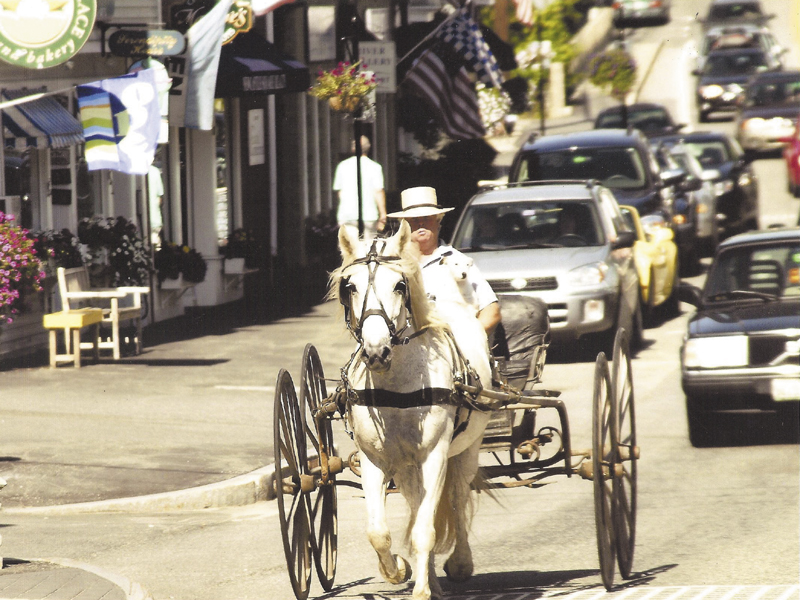AUGUSTA — Growing up in New Jersey, Nick Buck said his father owned a collection of about 40 carriages that were once drawn by horses. Over the years, Buck said he has owned 60 to 70 carriages. The horse-and-buggy era just fascinates him.
“People don’t know how close we are to the horse-drawn carriage era,” said Buck, 56, a resident of Newcastle. “If you ask your grandparents about it, they’ll probably tell you a story about horse-drawn carriages. … They were building carriages right up to the 1940s.”
Buck will speak on horse-drawn transportation at 6:30 p.m. Wednesday at Augusta City Center in a presentation sponsored by the Kennebec Historical Society. Buck said his talk is packed with many old illustrations and photos of the horse-drawn era. He said he gave the same presentation at the Owls Head Transportation Museum.
The tail end of the horse-drawn carriage era was between 1910 and 1915, Buck said. That’s when “horseless carriages,” also known as automobiles, began to dominate the roads and highways.
However, there were many locations where horse-drawn vehicles worked well into the 20th century and later, often for farming and logging tasks.
Buck said one of his many diverse jobs was giving sleigh rides in New Hampshire. While doing this, he met a man whose uncle in New York City owned 600 Belgian workhorses and their sole purpose was to deliver newspapers in the city.
In the city of San Francisco, huge skows brimming with hay were needed each day to feed the city’s horses, and big barges also were called on to haul away prodigious quantities of horse manure every day.
“Once people start talking about it, you’ll hear all kinds of things,” said Buck. “It’s a connection to our past that most people aren’t aware of. It’s a fun lecture.”
In the horse-drawn era, Buck said, many people owned their own horses and carriages. But for those who didn’t own transportation, there were livery stables where you could rent a horse and buggy.
Couples did this to go courting, Buck said. People also walked farther than they do today. A 2- to 3-mile walk was commonplace, he said.
The history of horse-drawn transportation goes way back before Roman chariots. The first wheels were not carved out of stone, Buck said, but were made from bent saplings in prehistoric times. The oldest wheel on record is displayed at Trinity Museum in Dublin, Ireland.
Buck organizes his lecture around different eras, starting before the Civil War in America and ending with modern times in Russia where horse-drawn transportation is still commonly in use.
Two years ago, Buck and his brother, Rinker Buck, went on an ambitious trek by covered wagon, pulled by three mules, to retrace the route of the Oregon Trail. The journey started in St. Joseph, Mo., and ended in Baker City, Ore., a distance of 1,800 miles. Buck said the wagon could travel about 3 1/2 mph, and it took the Bucks four months to cover the trail route. Some of the trail was obliterated by farmland, he said, but a 350-mile stretch through western Nebraska and Wyoming was still intact much as it was in the days of the pioneers.
Buck now works as a home builder in the midcoast region of Maine. He has held a diverse range of other jobs, including working as a fisherman in Alaska, a lighthouse keeper, a sleigh builder, a horseman, a marine engineer, a pilot and an actor.
Send questions/comments to the editors.



Comments are no longer available on this story